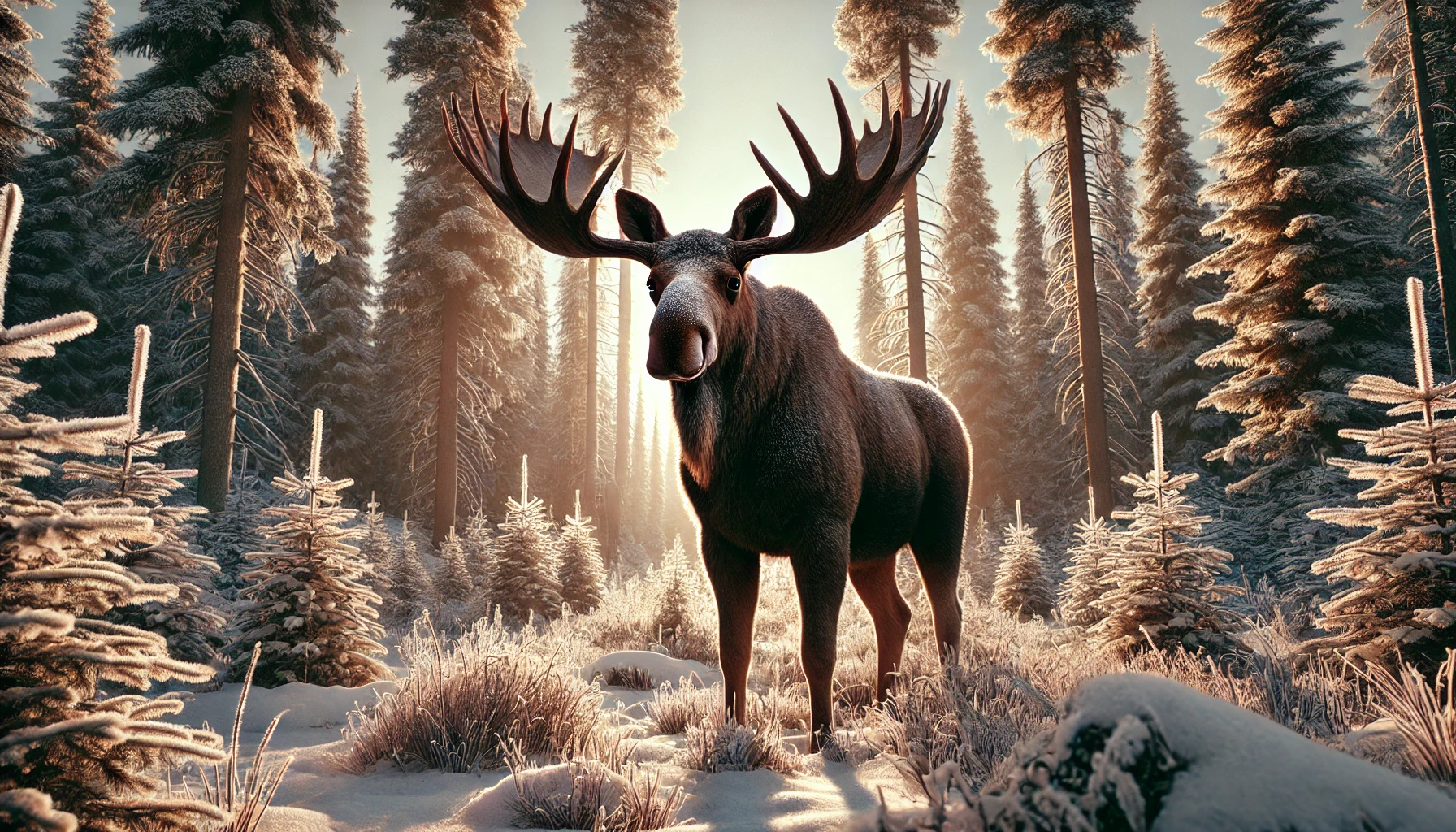Why Moose Hunting is an Attraction in Alaska
Moose hunting in Alaska is an iconic and sought-after activity, drawing enthusiasts from around the world. This appeal stems from a combination of the state’s abundant moose population, breathtaking natural landscapes, and the cultural and economic significance of hunting in the region.
- Abundant Moose Population
Alaska is home to one of the largest populations of moose in North America, estimated at around 175,000. These majestic creatures thrive in Alaska’s diverse ecosystems, from boreal forests to tundra landscapes. The state’s rigorous wildlife management practices ensure sustainable hunting opportunities while maintaining healthy moose populations. Hunters are drawn to the challenge of pursuing one of the continent’s largest land animals, with adult males (bulls) often weighing up to 1,600 pounds and boasting impressive antler spreads.
- Connection to Nature
The allure of Alaska’s wilderness plays a pivotal role in the popularity of moose hunting. The state offers vast, unspoiled landscapes, including towering mountain ranges, dense forests, and pristine rivers. Hunting trips often involve extended stays in remote areas, providing a unique opportunity to disconnect from modern life and immerse oneself in nature. For many, this experience is as valuable as the hunt itself.
- Cultural and Historical Significance
Hunting, including moose hunting, is deeply ingrained in Alaskan culture and history. For Indigenous communities, hunting has been a traditional practice for centuries, serving as a vital source of food, clothing, and tools. Non-Indigenous residents also rely on hunting to supplement their food supply, with moose meat being a high-protein, sustainable source of nutrition. Participating in a moose hunt allows visitors to connect with this rich cultural heritage and gain a deeper appreciation for the role of hunting in Alaskan life.
- Economic Impact
Moose hunting is a significant contributor to Alaska’s economy. Each year, hunters spend large amounts of money on licenses, gear, guide services, and travel, supporting local businesses and communities. Guided hunts are particularly popular among non-residents. These guided experiences often include transportation to remote areas, expert knowledge, and assistance with field dressing and packing out the harvested animal.
- The Challenge and Prestige
Moose hunting in Alaska is not for the faint of heart. The state’s rugged terrain, unpredictable weather, and remote hunting grounds test the skills and endurance of even the most seasoned hunters. Successfully harvesting a moose is considered a significant accomplishment and a point of pride. The antlers, often mounted as trophies, serve as a lasting reminder of the hunter’s achievement and the adventure they experienced.
- Wildlife Conservation
Paradoxically, hunting plays a critical role in wildlife conservation. Revenue from hunting licenses and tags funds wildlife management programs, habitat restoration, and research. By participating in regulated hunts, hunters contribute directly to the long-term health of Alaska’s ecosystems.
In conclusion, moose hunting in Alaska is much more than a sport; it’s an immersive adventure that combines the thrill of the hunt with a profound connection to nature and tradition. Whether driven by the promise of an extraordinary wilderness experience, the challenge of pursuing a massive animal, or the cultural significance of hunting, thousands are drawn to Alaska each year to participate in this iconic activity.





